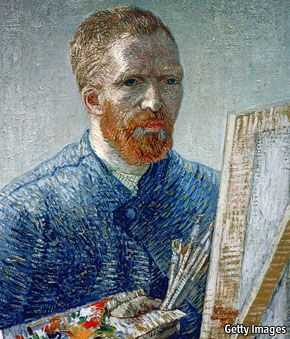Books and Arts; Book Review;Vincent van Gogh;Paint a palette blue and grey

Vincent Van Gogh seemed made for a bittersweet Hollywood biopic. The dazzling colours and dashing brushstrokes of his sunflowers, cornfields and cypress trees are among the most familiar and loved works in the history of art, fetching record-breaking sums in auction rooms. The inevitable biopic was called “Lust for Life”. But as an enormous and engrossing new biography shows, van Gogh's lust for conflict was strongest of all.











